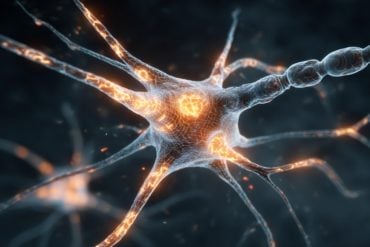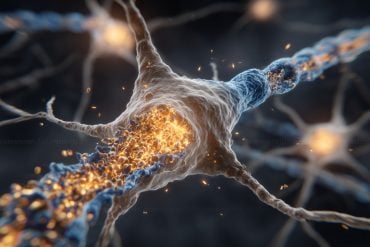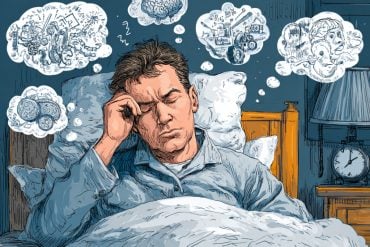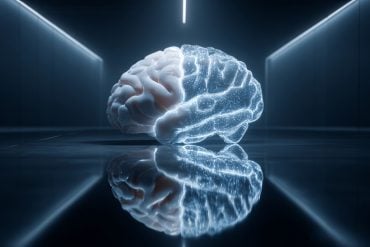Summary: Contrary to a popular theory, researchers discover the brain remains connected during non-REM sleep. The study reports not all forms of communication within the cerebral cortex are disrupted during this sleep phase.
Source: FECYT.
When we sleep, our bodies goes through different phases, however the brain remains interconnected during non-REM sleep. This was thought not to happen. The finding by a European team of researchers has also made it possible to analyse the scientific basis of consciousness, an increasingly important field of neuroscience.
Sleep is composed of various cycles in which there are different stages: slow and fast-wave, which make up non-REM sleep and REM sleep. During the night, it is normal to experience four or five complete cycles, each lasting around ninety minutes.
Various investigations have shown that communication between different areas of the cerebral cortex is interrupted during non-REM sleep and also when a patient is under anaesthesia, due to the loss of consciousness.
“It was thought that the brain disconnected during non-REM sleep and that the individual areas could no longer communicate effectively,” SINC was told by Umberto Olcese, a researcher from the Swammerdam Institute for Life Sciences of the University of Amsterdam (Netherlands).
Olcese and the rest of the research team (which involved researchers from the European CANON project and that was led by Prof. Cyriel Pennartz, who participates in the European Flagship Human Brain Project) have discovered that not all forms of communication within the cerebral cortex are lost during non-REM sleep. Specifically, correlations are preserved between neurons located within individual regions and between some subpopulations of neurons located in different cerebral areas.
To reach these conclusions, published in ‘The Journal of Neuroscience‘, the researchers studied how the brain regulates the neuronal connections of the neocortex and hippocampus in rats.
Advances in the study of consciousness
In a second investigation published in the same journal, a team of investigators from the Human Brain Project and the CANON project analysed the state of consciousness from a neuroscience perspective.

Although historically this concept has been studied from a philosophical standpoint, experts have reviewed various scientific studies which reflect the importance of a proper communication between cortical areas in the process.
“Neuroscientific research on consciousness driven by new methods and theoretical advances should be increasingly robust and accepted, since notable scientific and clinical progress is now starting to be made,” the authors pointed out.
The CANON project is a partnering project of the Human Brain Project, one of the Future Emerging Technology Flagship Initiatives (FET Flagships) of Horizon 2020 – the European Union framework programme for financing research.
Inserm (the French National Institute of Health and Medical Research) and the Wigner Research Centre for Physics (Hungary) participate in the CANON project alongside the University of Amsterdam.
Source: SINC Team – FECYT
Publisher: Organized by NeuroscienceNews.com.
Image Source: NeuroscienceNews.com image is in the public domain.
Original Research: Full open access research for “Consciousness Regained: Disentangling Mechanisms, Brain Systems, and Behavioral Responses” by Johan F. Storm, Mélanie Boly, Adenauer G. Casali, Marcello Massimini, Umberto Olcese, Cyriel M.A. Pennartz and Melanie Wilke in Journal of Neuroscience. Published online November 8 2017 doi:10.1523/JNEUROSCI.1838-17.2017
[cbtabs][cbtab title=”MLA”]FECYT “Brain Still ‘Connected’ During Non-REM Sleep.” NeuroscienceNews. NeuroscienceNews, 1 December 2017.
<https://neurosciencenews.com/non-rem-sleep-neuroscience-8086/>.[/cbtab][cbtab title=”APA”]FECYT (2017, December 1). Brain Still ‘Connected’ During Non-REM Sleep. NeuroscienceNews. Retrieved December 1, 2017 from https://neurosciencenews.com/non-rem-sleep-neuroscience-8086/[/cbtab][cbtab title=”Chicago”]FECYT “Brain Still ‘Connected’ During Non-REM Sleep.” https://neurosciencenews.com/non-rem-sleep-neuroscience-8086/ (accessed December 1, 2017).[/cbtab][/cbtabs]
Abstract
Consciousness Regained: Disentangling Mechanisms, Brain Systems, and Behavioral Responses
How consciousness (experience) arises from and relates to material brain processes (the “mind-body problem”) has been pondered by thinkers for centuries, and is regarded as among the deepest unsolved problems in science, with wide-ranging theoretical, clinical, and ethical implications. Until the last few decades, this was largely seen as a philosophical topic, but not widely accepted in mainstream neuroscience. Since the 1980s, however, novel methods and theoretical advances have yielded remarkable results, opening up the field for scientific and clinical progress. Since a seminal paper by Crick and Koch (1998) claimed that a science of consciousness should first search for its neural correlates (NCC), a variety of correlates have been suggested, including both content-specific NCCs, determining particular phenomenal components within an experience, and the full NCC, the neural substrates supporting entire conscious experiences. In this review, we present recent progress on theoretical, experimental, and clinical issues. Specifically, we (1) review methodological advances that are important for dissociating conscious experience from related enabling and executive functions, (2) suggest how critically reconsidering the role of the frontal cortex may further delineate NCCs, (3) advocate the need for general, objective, brain-based measures of the capacity for consciousness that are independent of sensory processing and executive functions, and (4) show how animal studies can reveal population and network phenomena of relevance for understanding mechanisms of consciousness.
“Consciousness Regained: Disentangling Mechanisms, Brain Systems, and Behavioral Responses” by Johan F. Storm, Mélanie Boly, Adenauer G. Casali, Marcello Massimini, Umberto Olcese, Cyriel M.A. Pennartz and Melanie Wilke in Journal of Neuroscience. Published online November 8 2017 doi:10.1523/JNEUROSCI.1838-17.2017






